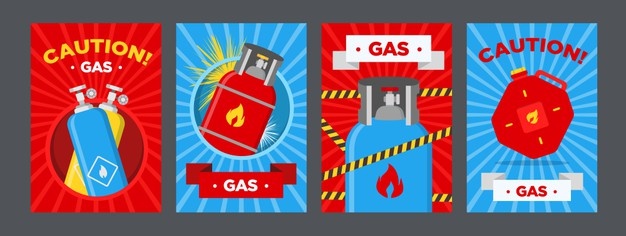Must-Know Safety and Maintenance Tips When Buying Domestic LPG Cylinders
It's pretty common today to see LPG being used in almost every industry, household, and so on for obvious reasons, such as its affordability, utility, ecological friendliness, and it’s less perilous compared to other fuel options.
However, it is not uncommon for us to see several cases of LPG cylinder explosions that have caused irreparable injury to individuals and even fatalities.
Catastrophes involving LPG gas cylinders are definitely not sporadic but are normally the result of negligent handling versus the volatility of LPG. Given that over 80% of homes use LPG, awareness about dealing with them responsibly is imperative to avert any unforeseen circumstances.
In light of this, let's get to the point and explore the easy-to-follow safety tips that can make all the difference in the world.

Safety tips to follow when buying:
- Verify that the safety cap and seal are intact. If the seal on the cylinder has been tampered with, don't accept it.
- Located on the inside of the cylinder stay plate, you will find the testing due date. Each due date is marked with an alphabet representing the quarterly month (A - March, B - June, C - September, D - December) and the year of testing. If the DFT indicates A-22, then the cylinder needs to be tested by March 2022. Upon receiving the cylinder after its due date, don't accept it.
- Considering the large black market out there, duplicate cylinders are a no-brainer. Be sure to purchase your gas cylinders from an authorized private gas company or government-owned distributor and ensure that they bear the ISI marking.
- The cylinder must be carried in an upright position to the destination and should not be rolled, dropped, or dragged as it may damage the cylinder.
- Be aware that the pressure regulators issued by government-owned gas companies differ in size from those issued by private gas agencies; they cannot, therefore, be interchanged.
- Before putting the new cylinder for use, apply soap solution to cylinder joints and Suraksha pipes to check for gas leaks. If bubbly substances are formed, then there is evidence of a gas leak. However, refrain from using open flames such as matchstick or lighter for leak detection.
Read More: Moving To New Address? Here’s How To Transfer Your LPG Connection
Safety Tips to follow when maintaining and storing:
- Never mess with the hose, pin, or regulator.
- Make sure that no electric appliances or cables are near the stove. Heat/sparks are released continuously from most appliances, which can be dangerous if kept nearby a burner.
- Regularly inspect the LPG hose for signs of wear and tear, and change the Suraksha rubber tube once every six months.
- It is recommended that you place the LPG cylinder vertically on a stable surface in a well-ventilated area away from sunlight. It is important not to enclose the cylinder in a cabinet, as gas leaks may concentrate in one place. Additionally, it should not be placed at the same height as the gas stove.
- Since the contents of the cylinder are flammable, it is important to keep it away from heat sources and other flammable substances. We have observed that some people keep kerosene and the cylinder together. This is a big no-no.
- Disconnect the LPG regulator and secure a safety cap with the nylon thread attached to it over the cylinder if your cylinder will not be in use for quite some time.
You May Like: How SHIVGAS Is Fuelling India’s Increasing Dependency On LPG Gas?
Wrapping Up
We hope after reading this blog you will be able to appreciate LPG for all its convenience, and reliability without having anxiety about cooking and possibly suffering an accident.
Even though several private gas agencies have implemented safety protocols aimed at reducing incidents, they can emerge at any time, but the onus is on us to prevent one.
In conclusion, the most important thing to take away from this blog will be seeking the help of the serviceman or delivery personnel to correctly affix the gas cylinder.


Comment (0)